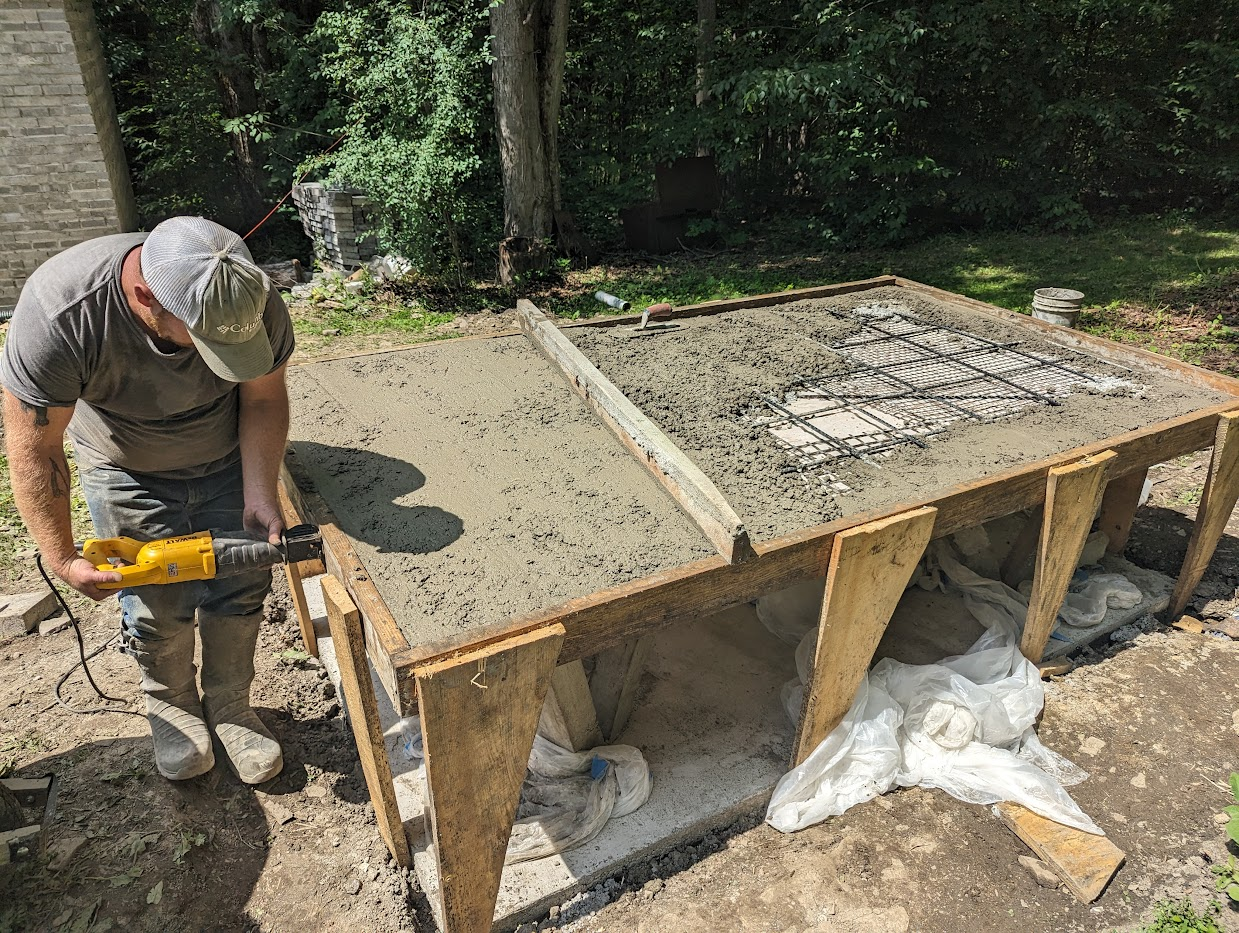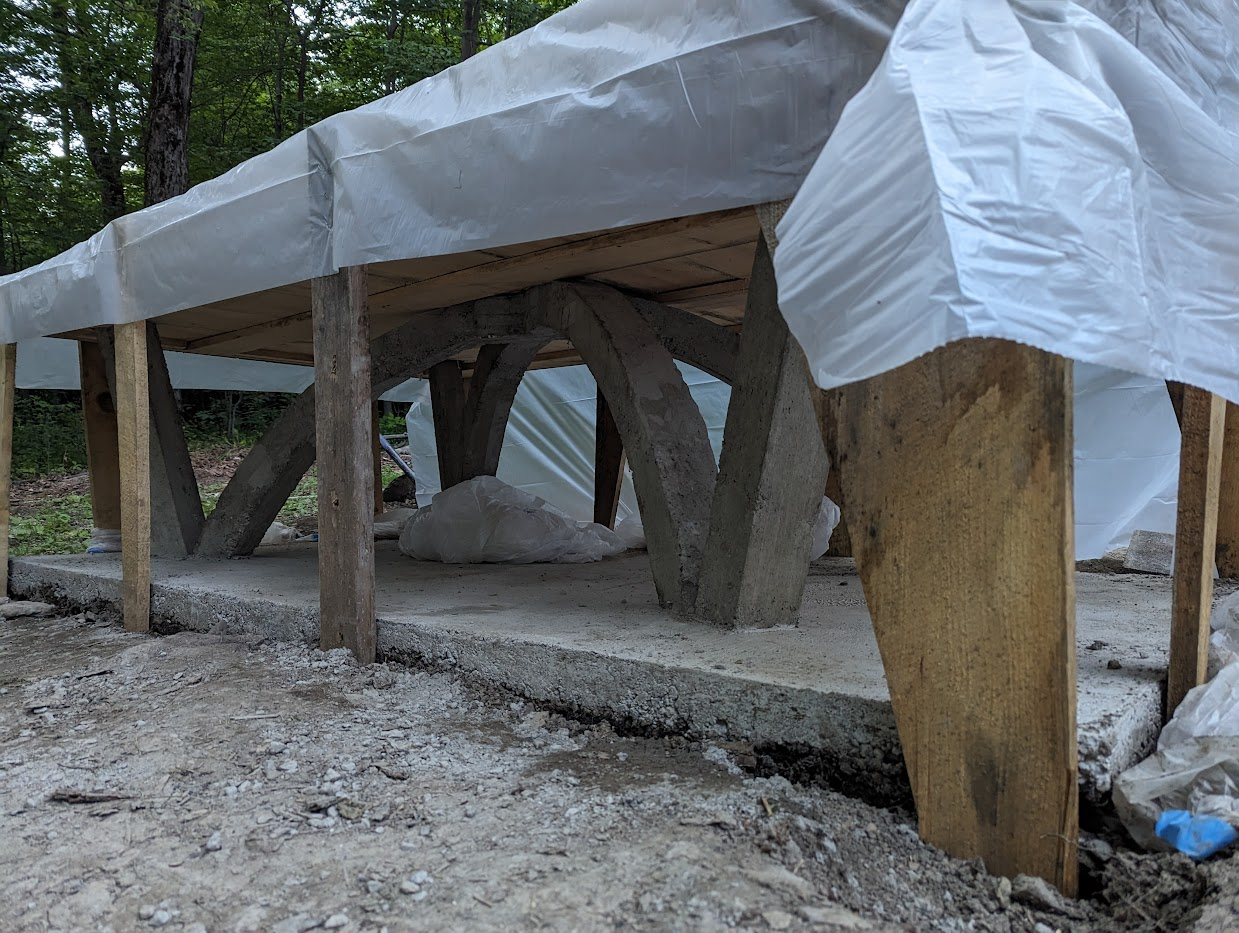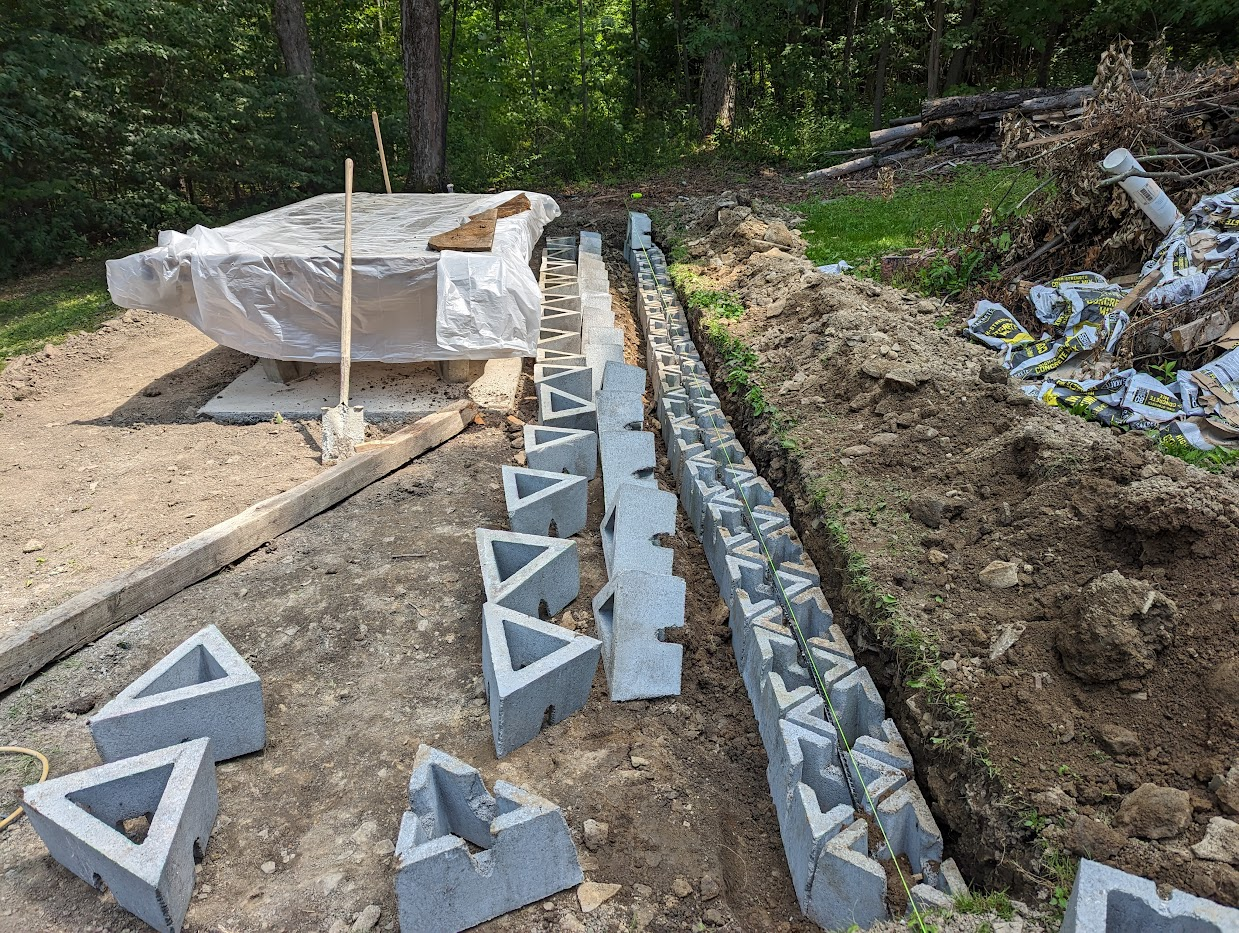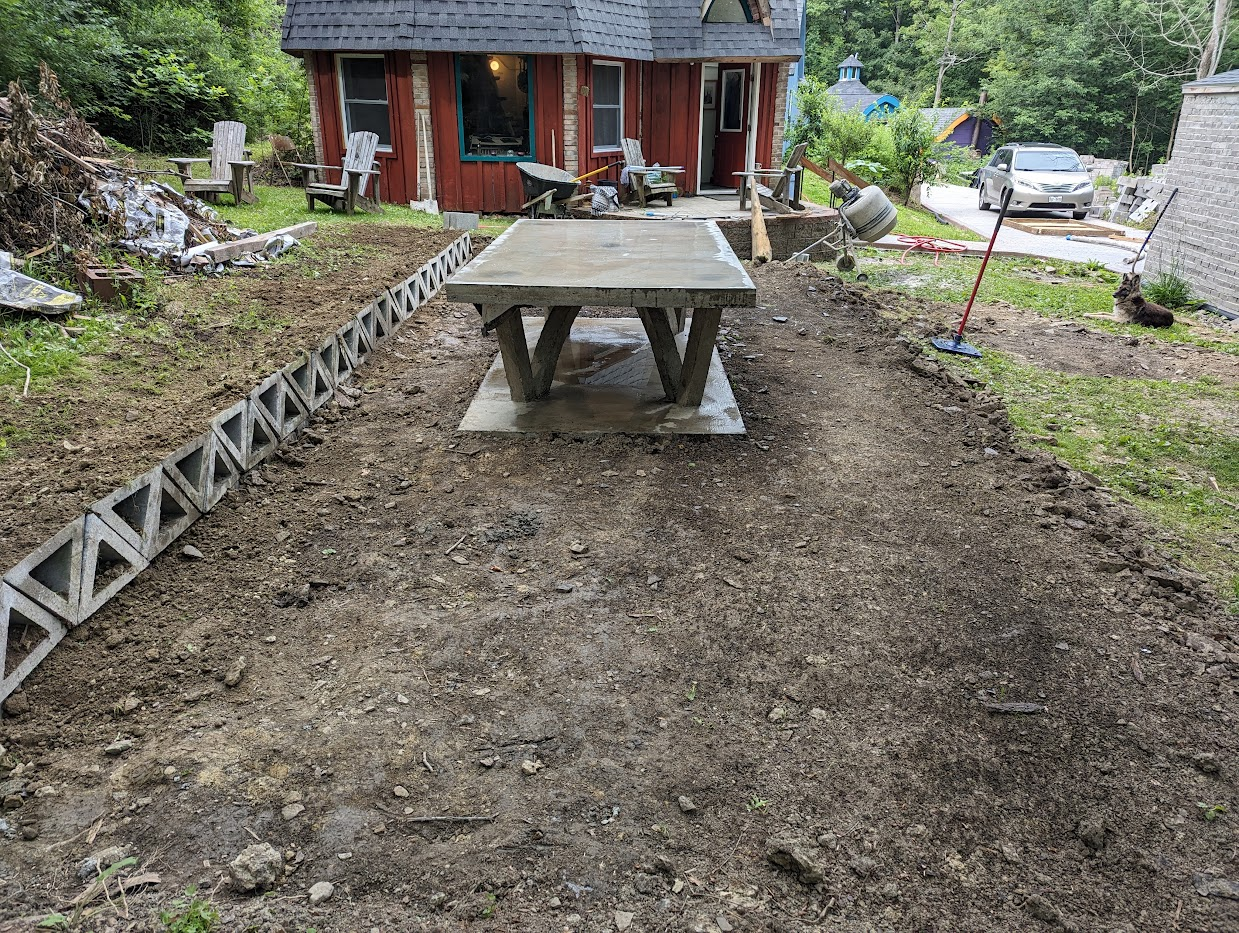I recently completed making a concrete ping pong table. It came out pretty well, and I look forward to playing some ping pong!
Here are the basic steps I took to make and assemble the ping pong table.
First, I made wooden molds. There was a mold made for the table surface, a mold made for the central supporting arches, and four molds for legs which spring from the arches to the corners of the tabletop. Here are the molds, shown upside down.
Here are the four legs being made. Each leg also has 4 pieces of #3 FRP rebar.
After the base cured for a few days, we set up the mold for the tabletop. The mold was filled with basaltic FRP mesh reinforcement and also #3 FRP rebar, for tensile reinforcement. The rebar was located so that it aligned with the legs underneath, for strength. The entire mold was greased with Crisco, used as a mold release agent. A sheet of plastic was placed on top of the wooden form, to help the concrete release from the mold.
The mold was then filled with concrete, with particular attention to place some concrete under the rebar, to help provide proper cover. The concrete was then screeded (spread evenly with a straight piece of wood, moved back & forth as it is drawn across the form). This surface was then floated, or smoothed out by hand. The edges of the form were all vibrated. In this case, we did not have a proper concrete vibrator, so we used a "sawzall" reciprocating saw, which worked pretty well.
Properly floating the surface is important to get a nice, smooth, flat finish. It is worth spending some time and doing this properly.
The form was then covered and allowed to cure for a full week. It helps to cover the concrete with plastic, so that water remains in the curing concrete to form hydration products.
After one full week, the wooden forms were removed. We also did some landscaping, to create a level playing surface on the ground around the table; this involved a retaining wall being placed also. This work was simply done with a pick, shovel and rake. It took an afternoon.
Now, it just needs a net! I will also use a sealant to help protect the concrete from the weather, something like Thompson's Water Seal. This will also make a great picnic table. I expect it should last a long time. We will also plant some grass on the fresh dirt.
This basic concept could be made much larger, to provide an elevated platform to build homes on. We could use my company's masonry arch system to accomplish this, easily and quite affordably. This would be appropriate for coastal areas which are prone to storm surges and flooding from hurricanes and severe weather. It is stronger than the wooden posts currently used to elevate homes above a storm-surge plain, and will not rust or rot, like wood. It is also more elegant and looks much better than those wooden posts.
This table cost about $150 in concrete. The rebar is also inexpensive. If anyone wants a concrete ping pong table and would like to borrow my molds, you are welcome to. Just let me know.
This thing should be fun, I look forward to using it!



















